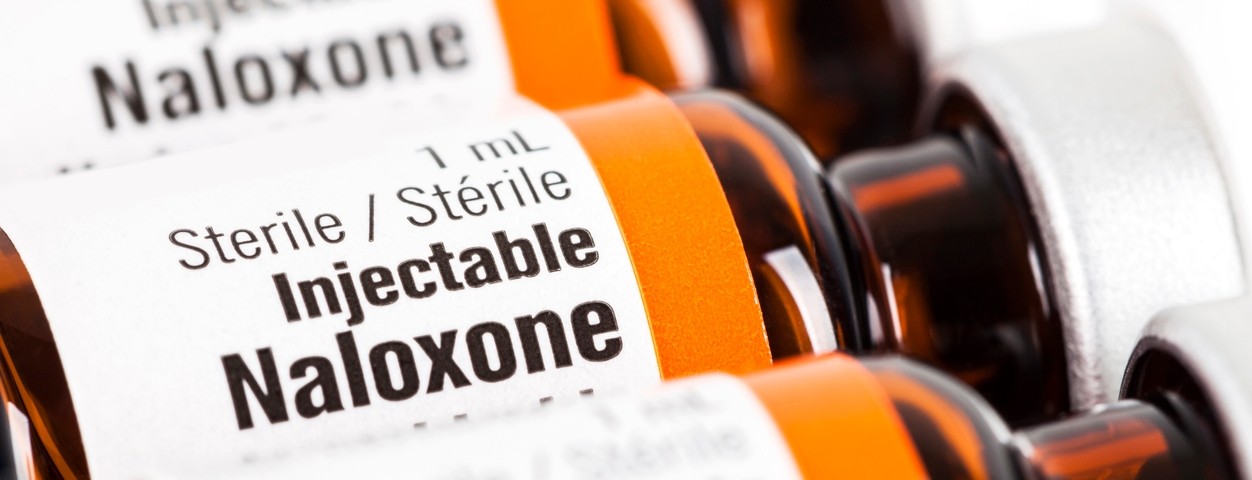
Enquirer: New vending machines offer naloxone, could reduce spread of HIV
The Cincinnati Enquirer recently reported on new vending machines located in Cincinnati that are stocked with free harm reduction supplies. The supplies include naloxone, the drug that reverses the effects of an opioid overdose, fentanyl test strips and condoms.
Harm reduction vending machines are becoming more common throughout Hamilton County and nationwide after a program run by Cincinnati nonprofit Caracole in partnership with the University of Cincinnati launched one of the first vending machines in the United States in 2021. Now, the new machines operated by Hamilton County Public Health are providing access in more areas of the city.
UC researcher Dan Arendt, PharmD, assistant professor in UC’s James L. Winkle College of Pharmacy and co-chair of the pain stewardship committee for UC Health, published research in 2022 that found the vending machine "led to an increased accessibility of harm reduction products and services" and helped contribute to Hamilton County’s overdose deaths decreasing in 2021. Since then, Arendt has continued to research the machine's effects.
Arendt and Suzanne Bachmeyer, Caracole's director of prevention, have become national and international advocates for the use of the vending machines. The duo was also recently featured in a recent Rotary Magazine story.
Arendt told Rotary Magazine that as of October 2023, naloxone accessed through the Caracole vending machine has been used to reverse nearly 3,500 overdoses since its launch in February 2021. Test strips have detected fentanyl in users' drug supply about 5,800 times.
"We found that the best bang for your buck in terms of just overall dollars spent in harm reduction is when naloxone is given to the community who is at risk," Arendt said. "It’s something that we’re hoping will help because this current system doesn’t work well enough that these things aren’t needed."
One of the earliest harm reduction organizations in the region, The Cincinnati Exchange Project, provided sterile syringes to people who used drugs beginning in 2014 and was led by former University of Cincinnati infectious disease expert Judith Feinberg.
Read the Enquirer article. (Note: Subscription may be required to read full article.)
Read the Rotary Magazine story.
Read more about the Caracole/UC vending machine project.
Featured photo at top of bottles of injectable naloxone. Photo/iStock/PowerofForever.
Related Stories
Mural by UC grad honors U.S. military history
July 17, 2024
Local 12 highlighted a new mural by University of Cincinnati graduate and artist Brandon Hawkins that pays tribute to U.S. military history.
Social media fuels extreme political rhetoric
July 17, 2024
UC College of Arts and Sciences Professor Jeffrey Blevins tells Local 12 that online algorithms fuel political polarization on social media.
We love ‘Lucy’ — the AI avatar redefining UC tech transfer
July 17, 2024
In a visionary leap at the University of Cincinnati, the marriage of artificial intelligence and interactive technology has birthed "Lucy," a Smarthelp AI avatar poised to revolutionize how regional industries engage with UC's tech transfer initiatives.
NIS program opens new horizons for international student
July 17, 2024
In his pursuit of physics and a taste for research, Akash Khanikor ventured from his hometown in India's Assam to the University of Cincinnati, drawn by the promise of hands-on exploration early in his undergraduate career as a NEXT Innovation Scholar.
Camp aims to empower children, teens who stutter
July 17, 2024
A one-week, evidence-based program for children and teens who stutter at the University of Cincinnati will teach kids to communicate effectively, advocate for themselves and develop confidence about their communication abilities. Camp Dream. Speak. Live., which is coming to Cincinnati for the first time July 22-26, began in 2014 at the University of Texas at Austin. The Arthur M. Blank Center for Stuttering Education and Research at UT expects to serve more than 2,000 children at camps across the United States, Africa, Asia and Europe this year.
UC Blue Ash takes next step in major renovation project
July 17, 2024
Muntz Hall, the flagship building on the University of Cincinnati Blue Ash College campus, is in the next phase of a major renovation project that will dramatically transform the main entrance, enhance access to student support services and add new spaces for students to study or meet between classes.
UC archivist explores Troy’s invisible workers
July 17, 2024
UC Classics archivist Jeff Kramer examined the unheralded and largely uncredited role laborers played in the 1930s excavation at Troy in Turkey.
From intern to full-time: Recent Lighting Design grad joins Bandit Lites
July 16, 2024
Lighting & Sound America spotlights recent graduate Riley Rowan's new position at Bandit Lites, a full-service design, management and producer of live events and entertainment.
CCM alum Donald Lawrence to be inducted into Cincinnati Black Music Walk of Fame
July 16, 2024
UC College-Conservatory of Music alumnus Donald Lawrence is part of the 2024 class of Cincinnati Black Music Walk of Fame inductees. Located at the Banks in downtown Cincinnati, the induction ceremony on July 27 will feature a parade of stars and a free concert by the Zapp Band.
U.S. stroke survival is improving, but race still plays role
July 16, 2024
U.S. News & World Report, HealthDay and Real Health covered new research from the University of Cincinnati that found overall rates of long-term survival following stroke are improving, but Black individuals experience worse long-term outcomes compared to white individuals.
